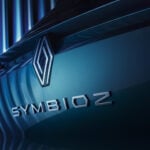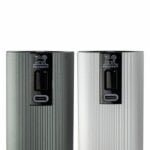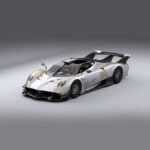Volvo intends to switch to Tesla’s megacasting technology to improve the range and charging speed of state-of-the-art electric vehicles built at the largest and oldest factory.
Volvo Cars will invest $ 1.1 billion to prepare the largest and oldest car factory for the era of electric cars.
A key part of the transformation will be the switch to the mega-turn for large parts of the aluminum body.
“This is the biggest technological change since we went from wood to steel for car bodies,” said Mikael Fermer, Volvo Solution Vehicle Platform architect.
Volvo’s head of engineering and operations, Javier Varela, said the change would result in a 75% time saving compared to how large the aluminum body parts are now assembled.
“Avoid the stamping and welding processes and replace them with a megaturning process which is a one-shot injection followed by a few adjustments after the injection,” Varela told ANE.
Volvo plans to have Torslanda ready for megacasting by 2025, which coincides with the start of production for the factory’s first all-electric car, where Volvo is currently producing Volvo XC90 and XC60 SUVs and V90 station wagons.
Tesla is already using megacasting in its production. A key goal at the plant near Berlin is to produce front and rear body parts for the Model Y SUV using individual pieces of metal.
Other automakers interested in the process include Mercedes-Benz, which used the one-piece casting method to form the backbone of the EQXX concept it debuted last month at CES in Las Vegas and Chinese manufacturer Nio.
Carved design
Production changes should help extend the range, reduce charging time and reduce the cost of next-generation Volvo electric vehicles, the carmaker said.
Volvo wants half of its global sales – about 600,000 units – to be battery-powered by 2025 and to become an all-electric brand by 2030. To make the transition, Volvo has announced investments in the last two years totaling over $ 4 billion.
Fermer, who returned to Volvo in 2018 after nearly three years at Apple as a senior product design engineer, said using megacasting would allow Volvo to “better sculpt the design around the chassis, powertrain and inside ”.
This should help to improve the range, he said, as it is possible to lower the seat, the roof line and the entire cross section of the car at the same time.
Casting major parts of the car’s floor structure as a single piece of aluminum also increases autonomy by reducing weight, Volvo said.
A necessary challenge
For Varela, the biggest challenge will be to switch to megacasting at a time when traditional production procedures are underway in Torslanda, but he is confident in his team. “We have confidence in the ability of our people and their ability to adapt and be agile,” he said.
In addition, Volvo is familiar with the process, albeit on a smaller scale, from the purchase of cast components, such as spring towers. “We already know how the process works. Now we will do it on much larger parts, but the technology is not radically different from a medium part or a small part “.
Fermer added that Volvo “has brought in some really senior casting experts” from other carmakers. Volvo declined to say where the “hand” of executives previously worked.
Tesla die-casting machines come from Idra Group, according to Bloomberg.
The nearby Italian company has sold its so-called Giga Press to three customers on three continents and is in talks with other major carmakers and suppliers, Bloomberg added.

 Renault’s compact family SUV will be called the Symbioz -.
Renault’s compact family SUV will be called the Symbioz -. Peugeot and its new range of salt and pepper mills -.
Peugeot and its new range of salt and pepper mills -. A new Uber Eats ad is being criticized for showing a peanut allergy -.
A new Uber Eats ad is being criticized for showing a peanut allergy -. Pagani announces new track-based hypercar, known as the Huayra R Evo -.
Pagani announces new track-based hypercar, known as the Huayra R Evo -. Introducing the Oscars in the Best Casting category -.
Introducing the Oscars in the Best Casting category -.